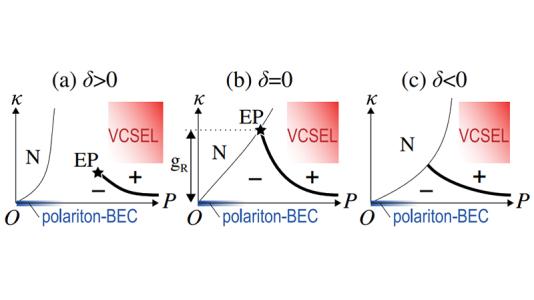
Scientific Achievement
We predict that there is a critical point analogous to liquid-gas coexistence in the phase diagram of a dynamically driven condensate of light and matter.
Significance and Impact
Our theory explains why polariton condensates—coherent superpositions of light and electron-hole pairs—show two thresholds for the onset of coherence, either discontinuous or continuous, and identifies possible coexistence at a unique exceptional point.
Research Details
- We use both microscopic theory and a generalized dynamical model of a two-component condensate to demonstrate that condensation can generically occur separately in both the “in-phase” and “out-of- phase” components of a non-equilibrium system.
- The existence of a degeneracy at an exceptional point is likely to be a generic feature of two-component driven condensates.
Argonne National Laboratory seeks solutions to pressing national problems in science and technology. The nation’s first national laboratory, Argonne conducts leading-edge basic and applied scientific research in virtually every scientific discipline. Argonne researchers work closely with researchers from hundreds of companies, universities, and federal, state and municipal agencies to help them solve their specific problems, advance America’s scientific leadership and prepare the nation for a better future. With employees from more than 60 nations, Argonne is managed by UChicago Argonne, LLC for the U.S. Department of Energy’s Office of Science.
The U.S. Department of Energy’s Office of Science is the single largest supporter of basic research in the physical sciences in the United States and is working to address some of the most pressing challenges of our time. For more information, visit https://energy.gov/science.